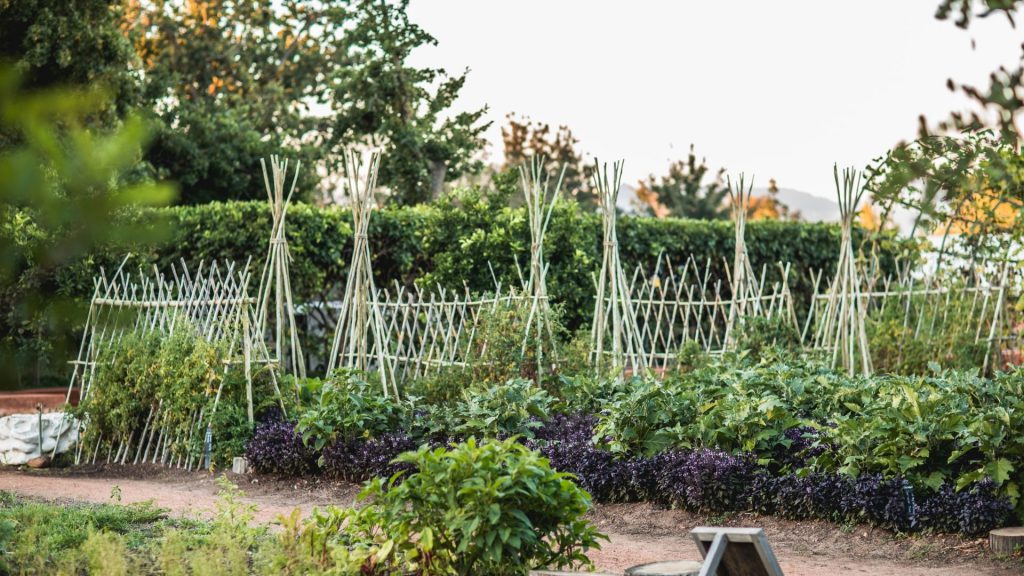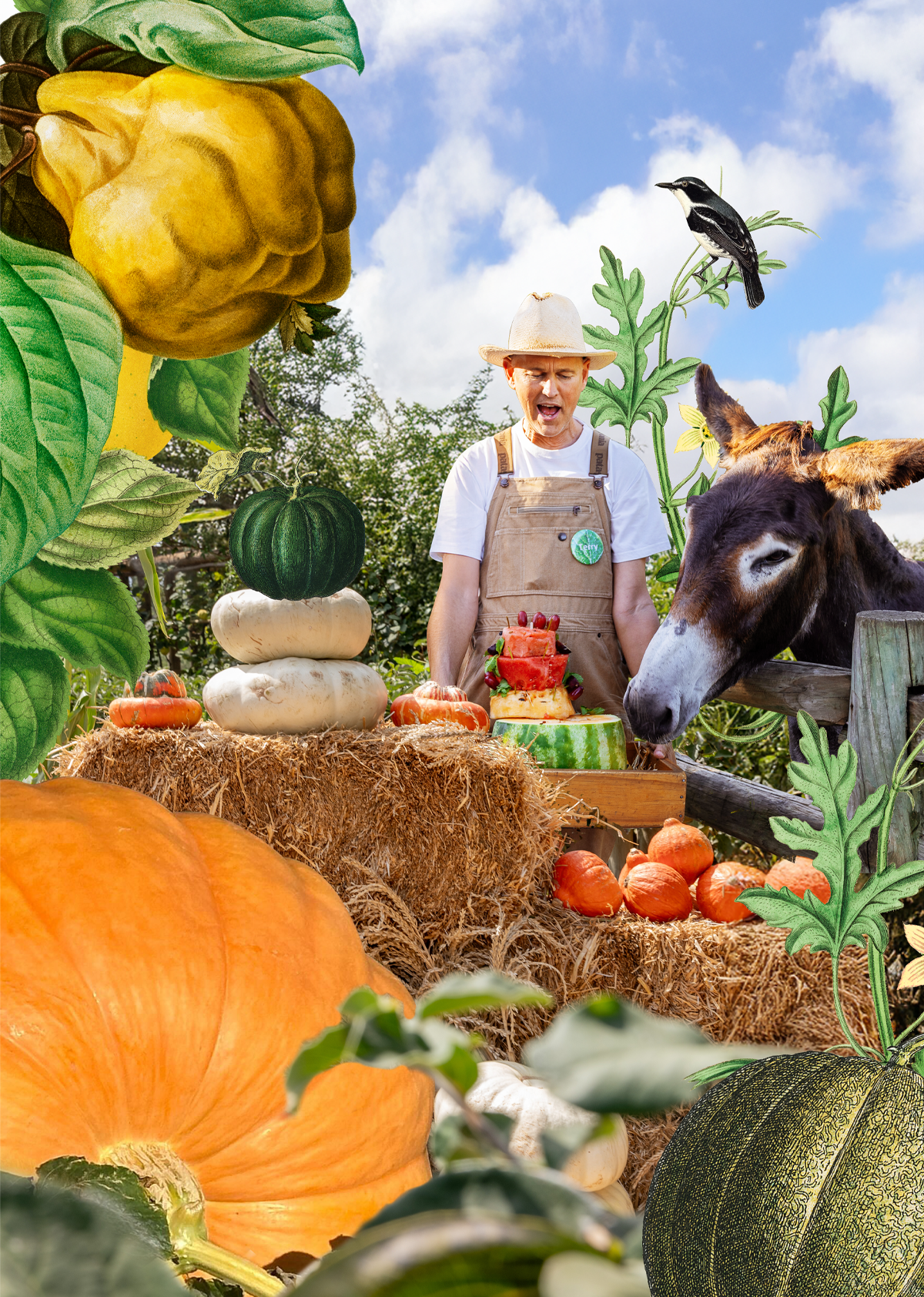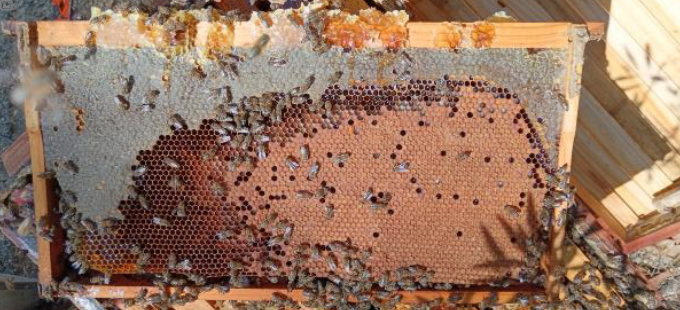Not just a pretty face
January 13th, 2021How to use edible flowers

In the middle of the Babylonstoren garden, you will find a colourful oasis of vibrant shrubs, creepers and flower-shooting vegetables. But this is not a random jewel-box of flowers; these plants all have something in common – their flowers are edible.
Below, we’re sharing our thoughts and tips on how to use some of our favourite edible flowers cultivated in the garden, each with its own unique story, colour and flavour.
Note: Never forage plants that might be sprayed with pesticides or those growing near a busy road. Some people could be allergic to infrequently consumed plant compounds. If you are trying a flower for the first time, nibble a little bit and wait for an hour before trying more.
Cornflower Centaurea cyanus
With flower heads bearing colours ranging from sapphire to blush pink, cornflowers look like little jewels dancing in the summer wind. Cornflowers are indigenous to Europe and grow wild just about anywhere, in cornfields too, hence the name. Historically, a tea was made from the flower heads to flush infected eyes. According to popular belief, this is where the Anglo-Saxons got their blue eyes from.
The petals can be strewn into salads, cakes, desserts, biscuits and sauces, and are best enjoyed when separated from the whole flower or flower head.
Try this recipe: Mix a handful of petals with a cup of Maldon sea salt. Lightly toss and scoop into a sealable glass container, creating a beautiful salt to sprinkle over salads and bread.
Cornflowers grow easily throughout the year but need adequate heat for the seeds to germinate. Sow in late summer and make sure to save the dry seed heads for the next season. To prevent the plants from toppling over, grow them between other sturdier plants like leeks or grains.

Bergamot Monarda didyma
Bergamot has a soothing aroma and the sweet nectar from its trumpet-shaped petals is widely enjoyed in salads and marmalades, and with ice cream. Mix the petals with yoghurt for a colourful addition to your breakfast granola.
Other names for this pompous pink flower are bee balm and oswego tea, as it grows abundantly along the Oswego River in North America where it originates from.
Traditionally, bergamot tea was used to soothe digestive problems, colic, nausea and bloatedness. Later the tea grew into a well-known substitute for black tea.
Throughout the warmer months, bergamot gradually grows into a lush shrub of about 0,8–1,2 m high. There are many different varieties with colours ranging between light purple, pink and magenta. This plant needs full sun and richly composted soil to grow.
Garden tip: After the flowers are spent, the shrub gradually dies until all that remains is a ground-covering perennial carpet, which needs to be divided every few years. Do this in winter by forking out sections and replanting in well-composted beds. By mid-summer, you’ll be sure to welcome the tall flowering spikes back again.
African marigold Tagetes erecta
The common name may be somewhat confusing, as Calendula officinalis is also known as the “marigold” in Europe. “Mary-gold”, as it was aptly named in honour of the Virgin Mary, suits the bright yellow and orange flowers. Perhaps the bright, round flower head was thought to represent a halo.
The bright orange marigold flower is famous for its effectiveness in keeping insects out of the garden, but not many people know about its culinary attributes. Marigolds are excellent companion plants to vegetables and herbs such as basil, tomato, aubergines, cucumbers, brassicas and more. The petals are aromatic and spicy and combine well with warm spices like coriander, cloves, peppercorns, aniseed or origanum.
Grow marigolds as a summer annual in well-dug, compost-rich soil. For more abundant growth, give plenty of space between the plants (around 60 cm). Marigolds want to be the queen of the garden. Daily watering through the summer months will leave the marigold plant lush and happy. Marigolds won’t easily wilt and die in drought, but growth will be stumped and the plant won’t grow much bigger than 10 cm high.

Day lily Hemerocallis species
Cultivating large patches of day lilies alongside our stone fruits ensures a bountiful harvest of these majestic flowers every summer. The botanical name Hemerocallis means “beauty for a day”, which refers to the flower’s short lifespan. You can eat and enjoy the flowers at any time in its development – from the bud to the mature stage.
The culinary uses of day lilies are quite extensive as the petals are thick, crisp and juicy and hold a sweet nectar. Breaking the petals apart and tossing them in a salad is an easy and delightful way to use this beauty. The young buds are known to taste like green beans and can be added to stir-fries, or the whole flower can be dipped into a batter and fried. There’s no end to experimenting with day lilies!
Day lilies are easy to grow and maintain, and prefer full sunlight as they are high-energy plants. Although drought-tolerant, day lilies thrive in moistness and will excel alongside ponds, borders or drains. Many species, including Hemerocallis flava, have a fragrant lemon smell. Flower breeders have created many varieties and the flowers come in all shapes – trumpet, ruffled, recurved and doubled.
Garden tip: Make sure to dead-head often by snapping the dead flower off the stem, keeping the other buds intact. When all the flowers on one stem are spent, you can prolong the plant’s lifespan by cutting it down to the ground to prevent the plant from wasting energy on seed-making.
Edible chrysanthemum Glebionis coronaria
Other names for this cheerful flower include “shungiku” and “garland chrysanthemum”. Forming a green shrub with multitudes of bright yellow flowers, it gladdens any garden. And we hope its culinary fame could spread just as far as its abundant seeds when left to self-sow.
The flowers and leaves have a slightly pungent taste and are rich in antioxidants. The leaves are favoured in stir-fries, on sandwiches and as a salad green. Harvest the leaves before the plant flowers, while they are still lush and dark green. Picking the leaves and the flowers continuously will benefit the shrub, which can reach 1,5 m in height in favourable conditions.
The flowers are used to colour spreads, butter, cheeses and cakes. The bright yellow petals will leave an appetising colour and taste. Experiment using the flower petals in baking or as a raw garnish.
In hot areas, edible chrysanthemum grows better in cooler seasons or as a winter annual as it is fragile and wilts easily in hot and dry conditions. The seeds need adequate heat to germinate, so should be sown early in autumn, before the weather cools down too much.
In our garden, the last season’s shrubs grew to a magnificent height of approximately 1,5 m. It will easily do so in richly composted, well-draining soil that is drenched twice weekly.

Join us for one of our daily garden tours to learn more about our edible flower garden.


